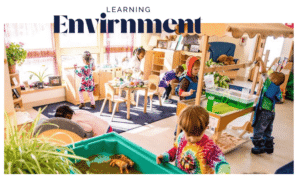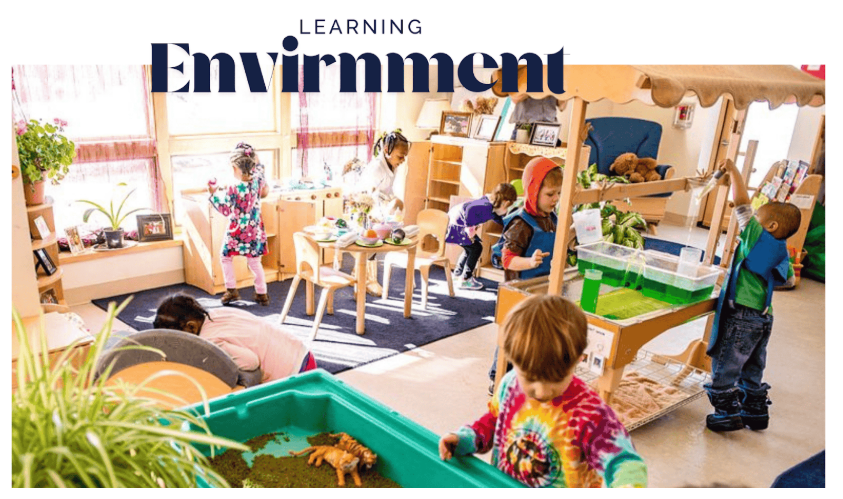
A student’s educational experience is greatly influenced by their learning environment. A classroom’s architectural layout or a teacher’s emotional tone can have a positive or negative impact on a student’s academic and personal growth.
Effects of Environment
1. Academic Performance
A well organized and engaging environment has a direct effect on academic results. classroom environment as seating facilities, lighting, noise free, accessible learning materials all contributes to students focus and learning.
Research shows that students in classrooms with natural lighting and organized layouts perform better in reading and math tests.
2. Student Motivation
Curiosity and motivation are fostered in a nurturing and engaging learning environment. Students are more likely to be interested in and actively when they feel protected, supported, and involved. Some time we use pictures or graphics that boots their motivation
Positive surroundings improves students inner inspiration.
Boredom, avoidance, or disengagement are examples of negative environments.
3. Emotional and Mental Well-Being
Students’ confidence and emotional satisfaction is increased in a positive psychological environment where they are appreciated, supported. It reduces students’ tension, anxiety, and fear of failing.
Teachers who are supportive develop comfort and trust.
Students can best express themselves in safe classrooms.
4. Behavior
The environment has dramatically effects the kids behavior, disputes and rude behavior among parents also affects the behavior of their kids in the same way classroom or school environment also contributes to the behavior of students. Students of well disciplined organizations are smart, intelligent and well mannered.
5. Creativity and Critical Thinking
Creativity and problem-solving abilities are fostered in environments that support questioning, freedom of expression, and promote project-based learning.
- Layouts of open classrooms
- access to arts, experiments, and discussions
- Flexible schedules and collaborative activities
A learning environment is more than just a classroom — it’s the sum of physical, social, emotional, and intellectual conditions that impact how students learn and grow. By creating positive, inclusive, and stimulating environments, educators can empower students to reach their full potential.
How Students Learn from the Environment
The environment plays a vital role in shaping how students learn, behave, and grow. A student’s surroundings—both physical and emotional—can significantly influence academic performance, social skills, and personal development.
1. Learning Through Observation
Students learn more from the people around them. They see how teachers talk, how students interact, and how adults solve problems. Their own attitudes, communication styles, and behaviors are adopted by these observations.
For instance, students are more likely to treat one another with respect when the teacher practices it in the classroom.
2. Social Interaction and Peer Influence
Interaction with friends, colleagues or fellows is an effective learning method. Through group projects, conversations, and play, students learn abilities including empathy, cooperation, and dispute resolution.
For instance, kids learn how to listen to others, manage roles, and solve problems as a team when they engage on group projects..
3. Physical Environment Enhances Focus
Students can focus and remain motivated in a classroom that is neat, well-lighted, and well-planned. learning from envirnment can be enhanced by having a comfortable atmosphere and access to study materials.
For instance, both individual and group learning can be supported in a classroom using reading materials, visual aids, and well-organized seating.
4. Emotional Environment Builds Confidence
Students are more excited to share their thoughts and take chances in the classroom when they feel emotionally protected. A supportive teacher and a positive classroom environment help students feel good about themselves and less afraid of failing.
Example: Courage and confidence are increased when a teacher supports their students despite their faults.
5. Digital and Technological Influence
Students that have access to technology use online collaboration tools, educational apps, and digital platforms to learn. Learning can become more accessible and interactive in this digital setting.
Example: Through active virtual learning, students who use online simulations or coding platforms usually understand difficult topics more quickly.
Author’s Details
Name: Tahir Khan
Position: Assistant Professor, Government College of Management Sciences Bannu
Founder & Director: Stars Academics, Ismail Khani Adda, D.I. Khan Road
Expertise: Business Education, Computerized Accounting, Digital Marketing, English Language Instruction
Experience: Over 10 years of experience in education and vocational training
Contact: WhatsApp – 0301-5089972
Website: www.sac.edu.pk
Facebook: Stars Academics
